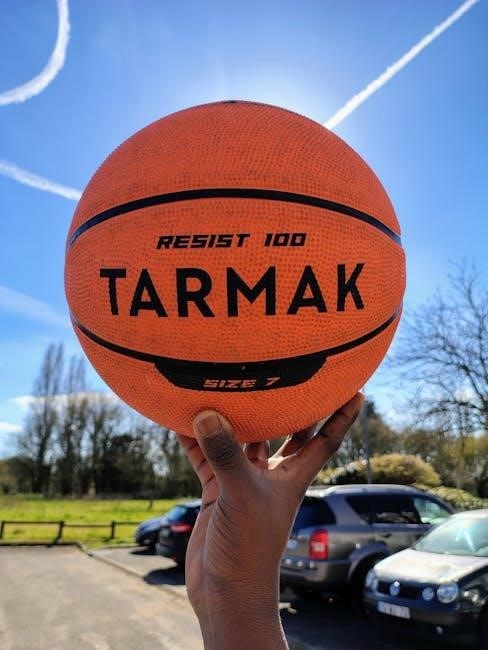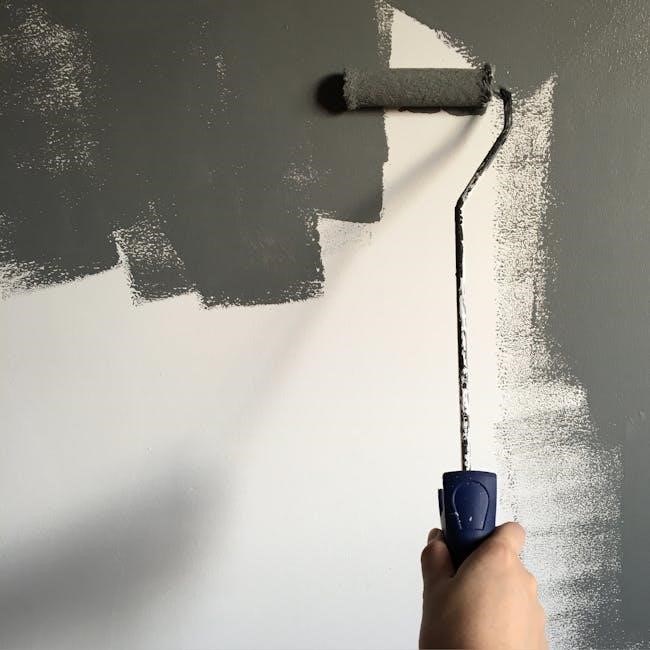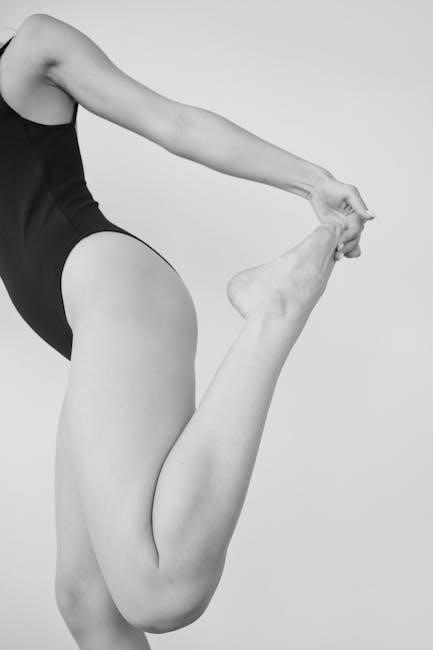Stroke hand exercises pdf provides guidance on therapeutic activities for rehabilitation, utilizing
exercises
to restore hand function and mobility, promoting independence and overall well-being through proper techniques and equipment.
Importance of Hand Exercises After Stroke
Hand exercises play a crucial role in stroke rehabilitation, as they help restore hand function, mobility, and overall dexterity. The primary goal of these exercises is to promote independence and improve the quality of life for individuals who have suffered a stroke. By incorporating hand exercises into their rehabilitation routine, individuals can regain control over their hands and fingers, enabling them to perform daily tasks with ease. This, in turn, can boost their confidence and self-esteem, allowing them to reintegrate into their communities and lead more fulfilling lives. Furthermore, hand exercises can help prevent complications such as joint stiffness, muscle atrophy, and contractures, which can arise if the hands and fingers are not properly mobilized. Regular hand exercises can also improve circulation, reduce swelling, and enhance overall hand function, making them an essential component of stroke rehabilitation. Effective hand exercises can be found in stroke hand exercises pdf resources.
Benefits of Regular Hand Exercises
Regular hand exercises offer numerous benefits for individuals recovering from a stroke, as outlined in stroke hand exercises pdf. These benefits include improved hand function, enhanced dexterity, and increased mobility. By performing hand exercises regularly, individuals can strengthen their hand muscles, improve their range of motion, and boost their overall hand coordination. Additionally, regular hand exercises can help reduce muscle spasms, improve circulation, and enhance sensory perception. Hand exercises can also promote cognitive function, as they require concentration and attention, which can help improve memory and problem-solving skills. Moreover, regular hand exercises can help individuals regain their independence, allowing them to perform daily tasks with ease and confidence. Overall, incorporating hand exercises into a rehabilitation routine can have a significant impact on an individual’s overall recovery and quality of life, making them a crucial component of stroke rehabilitation, as noted in various stroke hand exercises pdf resources;

Types of Hand Exercises for Stroke Recovery
Various hand exercises, including finger bends and stretches, are outlined in stroke hand exercises pdf to aid recovery and rehabilitation, using
- lists to organize activities.
Passive Hand Exercises
Passive hand exercises are an essential component of stroke rehabilitation, as outlined in stroke hand exercises pdf. These exercises involve another person, typically a therapist or caregiver, moving the patient’s hands and fingers to maintain range of motion and prevent stiffness. The exercises are usually performed gently and slowly, with the goal of promoting relaxation and reducing muscle spasms. A
caregiver can use techniques such as flexion and extension to move the patient’s fingers and wrist, while also providing support and stability to the affected arm. By incorporating passive hand exercises into a rehabilitation program, patients can experience improved mobility and reduced pain, ultimately enhancing their overall quality of life. Additionally, these exercises can be modified to accommodate individual patient needs and abilities, making them a valuable tool in the recovery process. Regular practice of passive hand exercises can also help prevent contractures and promote functional movement.
Active Hand Exercises
Active hand exercises are a crucial aspect of stroke rehabilitation, as they enable patients to regain control and strength in their hands and fingers. According to stroke hand exercises pdf, these exercises involve the patient using their own muscles to move their hands and fingers, promoting independence and self-reliance. A variety of active hand exercises can be performed, including finger bends, finger spreads, and wrist rotations. These exercises can be done with or without assistance from a therapist or caregiver, and can be modified to accommodate individual patient needs and abilities. By practicing active hand exercises regularly, patients can experience significant improvements in hand function, dexterity, and overall mobility. Additionally, active hand exercises can help patients develop the skills and confidence needed to perform daily activities, such as dressing, feeding, and grooming, ultimately enhancing their quality of life and promoting long-term recovery. Regular practice is essential to achieve optimal results.

Arm and Hand Stretching Exercises
Stroke hand exercises pdf recommends gentle stretching to improve flexibility and range of motion in arms and hands, enhancing overall mobility and comfort, with regular practice and patience always.
Exercises to Improve Hand Function
Stroke hand exercises pdf offers various activities to enhance hand function, including finger bends, finger spreads, and thumb opposition, which help regain dexterity and coordination, essential for daily tasks and independence.
These exercises can be performed with the assistance of a therapist or caregiver, using specialized equipment or everyday objects, such as balls, putty, or cloth, to provide resistance and challenge the hands.
Regular practice and patience are crucial for progress, and stroke survivors should aim to perform these exercises several times a day, as part of a comprehensive rehabilitation program, to achieve optimal results and improve overall quality of life.
By incorporating these exercises into their daily routine, individuals can regain hand function, reduce disability, and regain independence, enabling them to perform everyday activities with greater ease and confidence, and participate fully in their communities.
Exercises to Prevent Joint Stiffness
Stroke hand exercises pdf includes activities designed to prevent joint stiffness, such as gentle rotations, flexions, and extensions, which help maintain range of motion and reduce the risk of contractures.
These exercises can be performed passively, with a therapist or caregiver assisting the individual, or actively, with the individual using their own muscles to move their joints.
Regular exercise helps to keep joints mobile and prevents stiffness, making it easier to perform daily activities and maintain independence.
By incorporating these exercises into their daily routine, individuals can reduce the risk of joint stiffness and maintain flexibility, enabling them to move more easily and comfortably, and participate in activities they enjoy.
Stroke hand exercises pdf provides guidance on how to perform these exercises safely and effectively, and offers tips for incorporating them into a comprehensive rehabilitation program, to achieve optimal results and improve overall quality of life.

Evidence-Based Steps for Recovering Hand Function
Utilizing stroke hand exercises pdf, individuals can follow a structured approach to recovery, with guided
steps
and therapeutic activities to restore hand function and mobility effectively always.
Step 1: Assessment and Goal Setting
To initiate the recovery process, a comprehensive assessment of the individual’s hand function and mobility is necessary, utilizing stroke hand exercises pdf as a guide. This evaluation helps identify areas of strength and weakness, allowing for the establishment of realistic goals and expectations. A healthcare professional will typically conduct this assessment, taking into account the individual’s overall health and medical history. The assessment may involve a series of physical tests and evaluations, including range of motion, grip strength, and dexterity. By setting specific, achievable goals, individuals can stay motivated and focused throughout the recovery process. The use of stroke hand exercises pdf provides a structured approach to assessment and goal setting, ensuring a personalized and effective rehabilitation plan. With a clear understanding of their abilities and limitations, individuals can begin to work towards regaining hand function and mobility, ultimately improving their overall quality of life.
Step 2: Creating a Personalized Exercise Plan
Creating a personalized exercise plan is a crucial step in stroke rehabilitation, and stroke hand exercises pdf provides a valuable resource for this process. A healthcare professional will work with the individual to develop a tailored plan, taking into account their specific needs and goals. This plan will outline a series of exercises and activities designed to improve hand function and mobility, as well as address any related physical or cognitive impairments. The plan will also include information on proper technique, frequency, and duration of exercises, as well as any necessary modifications or adjustments. By following this personalized plan, individuals can maximize their recovery potential and achieve significant improvements in hand function and overall quality of life. The use of stroke hand exercises pdf ensures that the exercise plan is based on evidence-based practices and is tailored to the individual’s unique needs and abilities. Regular progress monitoring and plan adjustments are also essential to ensure optimal outcomes.

Additional Resources for Stroke Hand Exercises
There are various additional resources available to support stroke hand exercises, including online tutorials, videos, and mobile apps. These resources can provide individuals with access to a wide range of exercises and activities, as well as tracking and monitoring tools to help them stay motivated and engaged. Many organizations, such as the American Heart Association and the National Stroke Association, offer free or low-cost resources, including stroke hand exercises pdf guides, to help individuals recover from stroke. These resources can be used in conjunction with a personalized exercise plan to enhance rehabilitation outcomes. Some websites also offer online communities and forums where individuals can connect with others who have experienced stroke, share their assassin experiences, and learn from others. By leveraging these additional resources, individuals can optimize their rehabilitation journey and achieve better outcomes. Using these resources can help individuals regain hand function and mobility.
